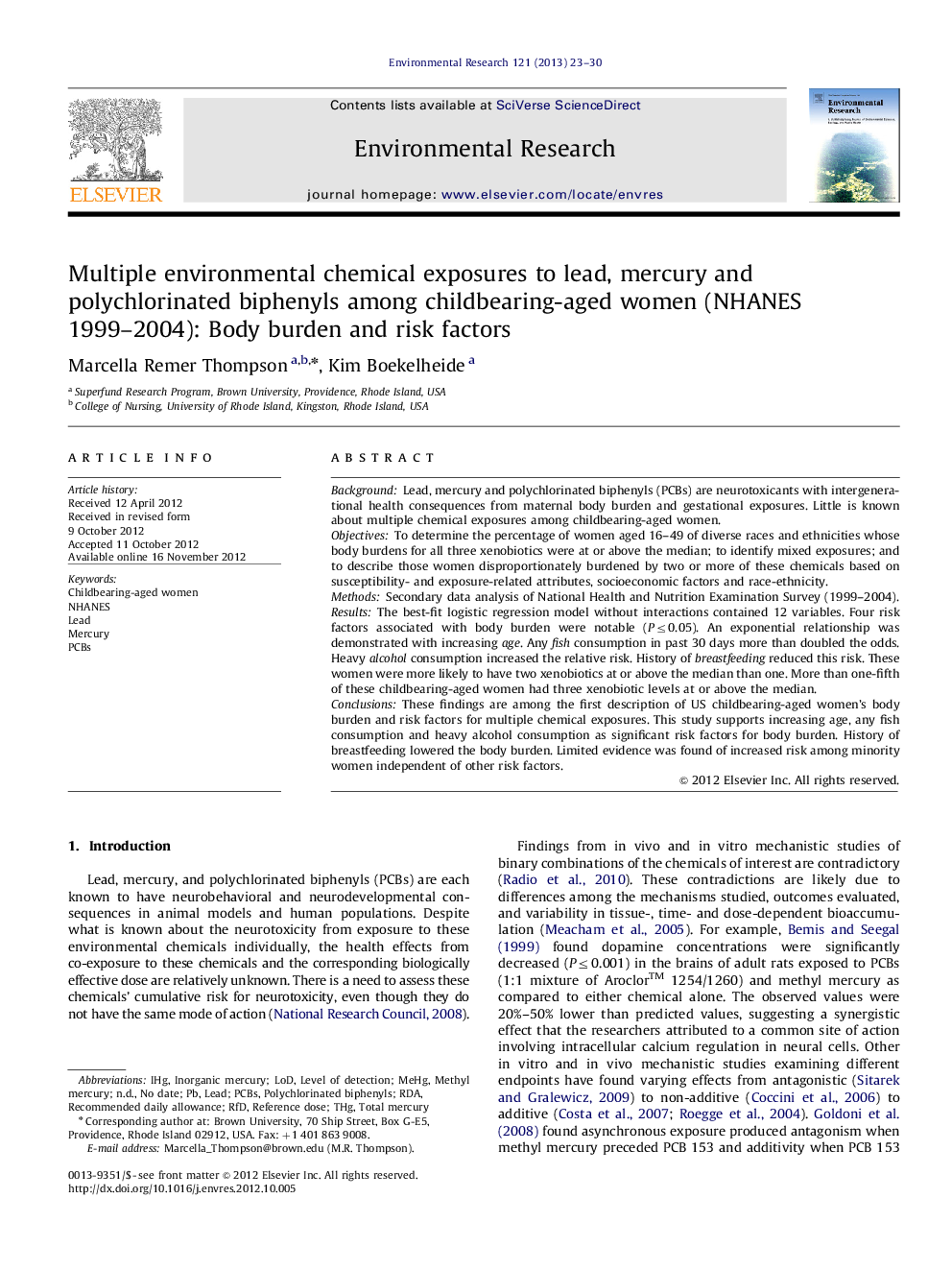| کد مقاله | کد نشریه | سال انتشار | مقاله انگلیسی | نسخه تمام متن |
|---|---|---|---|---|
| 4469811 | 1622580 | 2013 | 8 صفحه PDF | دانلود رایگان |

BackgroundLead, mercury and polychlorinated biphenyls (PCBs) are neurotoxicants with intergenerational health consequences from maternal body burden and gestational exposures. Little is known about multiple chemical exposures among childbearing-aged women.ObjectivesTo determine the percentage of women aged 16–49 of diverse races and ethnicities whose body burdens for all three xenobiotics were at or above the median; to identify mixed exposures; and to describe those women disproportionately burdened by two or more of these chemicals based on susceptibility- and exposure-related attributes, socioeconomic factors and race-ethnicity.MethodsSecondary data analysis of National Health and Nutrition Examination Survey (1999–2004).ResultsThe best-fit logistic regression model without interactions contained 12 variables. Four risk factors associated with body burden were notable (P≤0.05). An exponential relationship was demonstrated with increasing age. Any fish consumption in past 30 days more than doubled the odds. Heavy alcohol consumption increased the relative risk. History of breastfeeding reduced this risk. These women were more likely to have two xenobiotics at or above the median than one. More than one-fifth of these childbearing-aged women had three xenobiotic levels at or above the median.ConclusionsThese findings are among the first description of US childbearing-aged women's body burden and risk factors for multiple chemical exposures. This study supports increasing age, any fish consumption and heavy alcohol consumption as significant risk factors for body burden. History of breastfeeding lowered the body burden. Limited evidence was found of increased risk among minority women independent of other risk factors.
► We studied childbearing-aged women's burden for lead, mercury and PCBs.
► We analyzed NHANES data 1999–2004.
► 23% had all three xenobiotics at or above median.
► They were more likely to have two xenobiotics at or above the median than one.
► Age, fish and alcohol consumption were significant risk factors.
► Past breastfeeding reduced this risk.
Journal: Environmental Research - Volume 121, February 2013, Pages 23–30